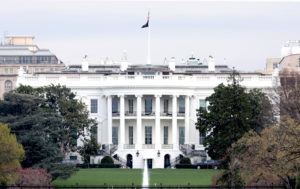
NASHVILLE, Tenn. (BP)–No good evidence exists to prove that condoms are the most effective method to curb the spread of AIDS in most societies, Norman Hearst of the University of California, San Francisco told Baptist Press.
Hearst has been involved in AIDS research for more than 20 years, and two years ago he was commissioned by UNAIDS — the joint United Nations program on HIV/AIDS — to conduct a review of what’s known about how well condoms work for AIDS prevention.
The medical doctor and professor of family and community medicine and epidemiology and bio statistics concluded that condoms are not the answer to stopping the worldwide AIDS epidemic.
Hearst found good evidence that condoms have been effective in certain settings, such as the commercial sex business in Thailand.
“Generally speaking, where they have been most effective is where transmission tends to be concentrated in certain settings and it’s possible to get very high rates of condom use in those settings,” he said.
“However, we really couldn’t find good evidence that condoms have been effective as a public health measure for generalized epidemics, the type that you see particularly in parts of Africa where the epidemic is the worst. That strategy has been employed for many years now and just has not produced the results that were hoped for,” Hearst said.
Maria Wawer, a professor at Columbia University, presented a study at an AIDS meeting in February that said abstinence and sexual fidelity have played virtually no role in reducing the AIDS rate in Uganda. Instead, she said, the deaths of previously infected people are responsible for the reduction in overall rates.
Hearst told BP he could not assess the study itself because it has not been published yet and he did not attend Wawer’s presentation.
“But I am familiar with their study and with their data, and there is no way to correctly draw the conclusions from their data that have shown up in the press,” he said. “Absolutely no way. Either they themselves are drawing incorrect conclusions from their data or the press is drawing incorrect conclusions from what they presented. Again, because there is no written report of this, there is really no way for me to tell those two apart.”
Wawer presented data starting in 1994, Hearst said, which cannot accurately determine what worked in Uganda because the success there was in the late ’80s and early ’90s.
“So their data first of all are irrelevant to what caused the big decline in AIDS infection rates in Uganda,” he said. “There are data from before 1994, and what those clearly show are that these declines were due to behavior change, mainly to people reducing their numbers of partners. If you’re talking about ABC — abstinence, being faithful and condoms — it was almost all the B, some of the A and very little C at that point. So it was aBc.”
The Columbia study focused on the district of Rakai, and Hearst said the data from that community shows that incidence rates have been stable since 1994 and if anything may be starting to increase slightly.
“The data, as I’ve heard secondhand that they’ve presented, show that since 1994, condom use has gone up and there has been a little bit of backsliding in terms of abstinence and number of partners,” Hearst said. “In other words, these things have gotten a little worse. So basically what has happened since 1994 is Ugandans in this district are relying a bit more on condoms and a bit less on abstinence and being faithful than they were 10 years ago and as a result of this, if anything, the infection rates are going up slightly. How anybody can take this data and twist it into saying A and B don’t work and C does is beyond me.
“I think the tremendous publicity that this has received shows the incredible eagerness of many people to try to latch on to anything that might prove that condoms are the answer,” he said.
Hearst has noticed that some members of the public health establishment have been reluctant to embrace abstinence and faithfulness as an effective strategy compared to condoms in the quest to reduce AIDS rates, particularly because they may appear to be embracing an agenda pushed by the religious right. He noted that USAID has been ahead of most international organizations in terms of advocating a more balanced ABC approach rather than C only.
“Nevertheless, there remain many individuals in USAID and most other organizations operating internationally that are very committed to the condom strategy,” Hearst told BP, adding, “I should make clear that I am in no way opposed to promoting condoms, however I think that needs to be part of an ABC strategy. In generalized epidemics in Africa, if you look at what has worked, there’s much better evidence for especially the B of ABC than there is for condoms.”
The time that USAID became more open to promoting the ABC method roughly corresponded to the time the Bush administration came to power, Hearst said, which causes some people to believe the two are intertwined.
“I think many people assumed that this was purely politically driven. In a way that’s unfortunate because while that may have had something to do with it, it was based on sound scientific evidence. And because of this assumption that it was all politically driven in many quarters, particularly international quarters, people perhaps paid less attention to the scientific basis for it than they would have otherwise,” he said. “If this policy had come out a few years earlier, say during the Clinton administration, I’m just speculating, but maybe people would been more inclined to give it a fair hearing.”
–30–













